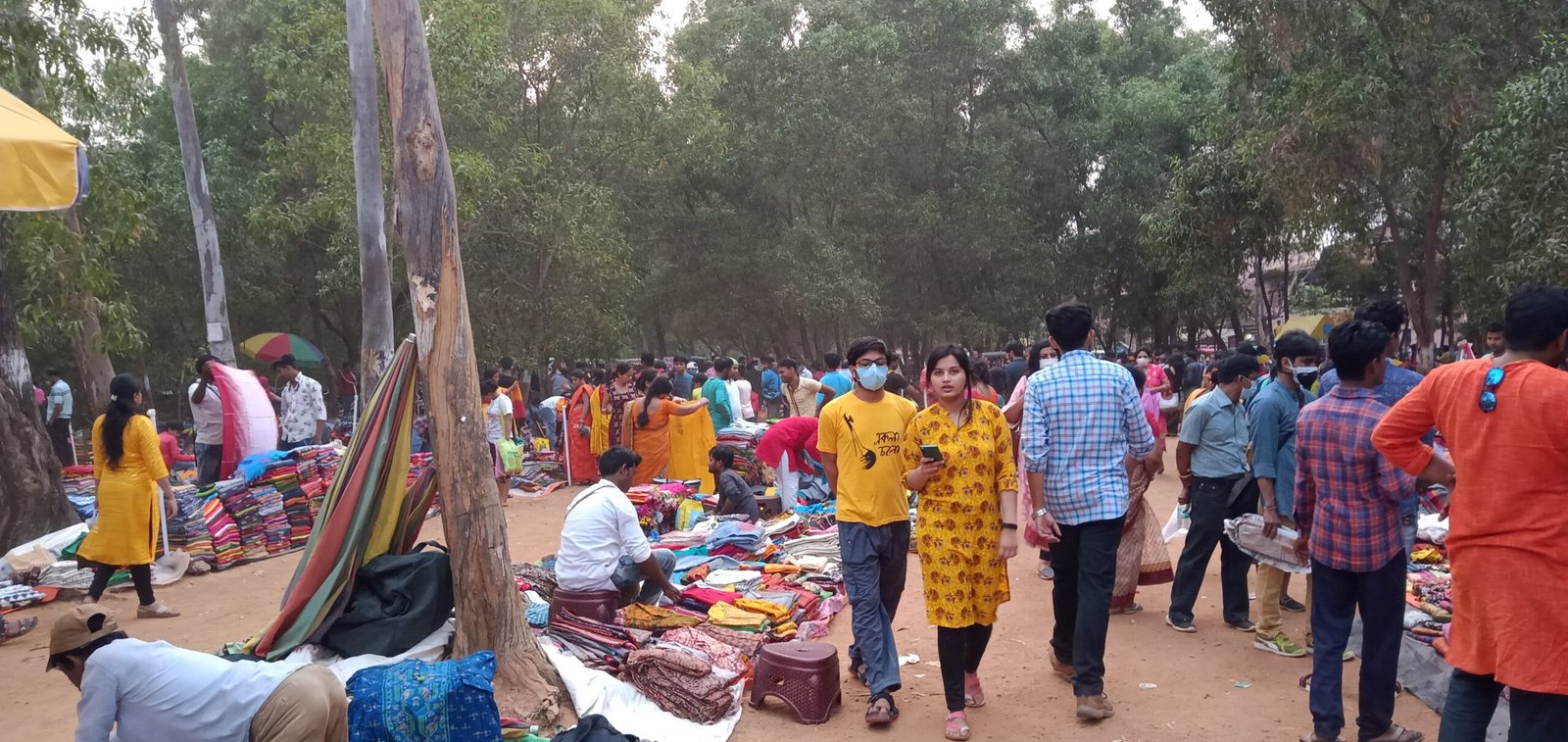Sonajhuri Haat or market is a hebdomadal Saturday afternoon market, set up by local craftman in Shantiketan.
Sonajhuri Haat in Shantiketan is a very much significant for Bengal culture, which kept oral history of the Thakur family of Kolkata. Santiketan is a locale of Bolpur city in Bolpur subdivision of Birbhum district in West Bengal, near about 152 km north from Kolkata. The place were being confirmed by Maharshi Devendranath Tagore, the father of Rabindranath Tagoreand later in 1921 Rabindranath Tagore whose imagination to establish a university Visva-Bharati, in a small town.
In 1863, Devendranath Tagore took a land in lease with two alstonia scholaris tree(chatim tree) and constract a guest house named ‘Shantiniketan’. Gradually, the whole area came to be known as Shantiniketan.
Rabindranath Tagore first visit in Shantiniketan at the age of 12 in 1873. Devendranath decided that the entire property to establish the Brahmavidyalaya in 1901, Rabindranath commence Brahmacharyaashrama and it came to be known as Patha Bhavana from 1925. The environment of Jorasanko Thakur Bari and Shantiniketan became the based of literature, Music, Painting and theatre.
There are several picturesque point of absorption with the Sonajhuri trees and red soil. Sonajhuri literally means droplets of gold, because throughout the winter season the Sonajhuri trees shed their infinitesimal yellow flower and the entire forest seems to have a deluge of gold. The Bonerpukur Adivasi village is inhabitants of Santhali tribes and the village is stipple with beautiful mud. These houses walls adorn with alluring tribal painting.
At that time of Tagore, the Khoai Fair was not started but he inscribe many verse and songs based on the distinction Sonajhuri forest and Khoai river. “The knee-deep water poem”(Amader choto nodi) is one of them. A well known novel in Bengali literature is “Hansuli Banker Upakatha”(Story of the Sickle-Shaped Curve) by Tarasankar Bandyopadhyay was also stimulated by the Khoai river.
The Sonajhuri Haat, became a part of the Bengali culture, and it befall for over 20 years.It materialize every Saturday on the bank of Khoai or Kopai River, in consequence the fair also called Shonibarer Haat(Saturday’s fair). The fair is dub after this Khoai river it’s called Khoai Mela.
The word khoy in Bengali means erosion. This Khoai region is a geographically emergence of very small canyons by wind and water, as it is situated near bank of river. This location is distinguish by the Shayambati canel one side of Sonajhuri trees and other side with red laterite soil.
The place where adjoining with famous winding Khoai river or Kopai River. The name is deliberate of the attribute of suburb. The name Khoai Fair designate this fair was erect by the local craftman on Saturday in the Khoai region on edge of Khoai river, for that reason this fair called Shanibarer Haat(Saturday’s fair).
The Sonajhuri Haat initially commence with to delve the art, music, and songs of local people and Santhali tribes on a huge numbers. The main observation is to affordable handmade antiquity, such as embroided scarves, kamiz, kurta,shirts different kinds of bags and purses, handicrafts, nacklaces, earring, wall hanging etc. The local baul singers present traditional folk music and song by using string instrument ektaras and folk dance, lungi panchi Dance by Santhali tribes.
The outdoor events starts every Saturday in the afternoon, be contingent on upon the heat and other weather condition. The Khoai Fair on Saturday is called full haat as on Sunday is called bhaya haat as on Sunday the fair also take place in morning. The fair is an al fresco, without any covered stalls, on the red ground.
The fair is fully ad joining by sharea robusta(sal), Teak(segun)and Eucalyptus trees. One amezing thing is that in this fair most of the shop owners are woman, hence, we find the clear picture of woman empowerment and with the due respect towards the woman of 20th century that today’s they became the feather of our society. As we find, many lyrical contributions towards them, such as “The looking Glass” by Kamala Das,”The River of Girl” by Tishani Doshi,” The Looking Glass” by Kamala surayya, and many others.
The fair in today’s world hold an attention towards the Indian culture, which bulid up the pillar in today’s Bengal.
Forest conservation- It’s assist to fortify the sphere! The 5 importance of forest conservation.













































